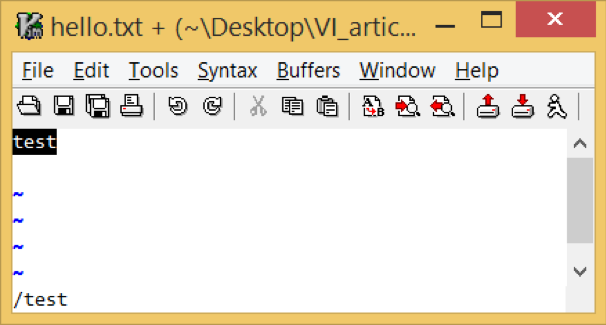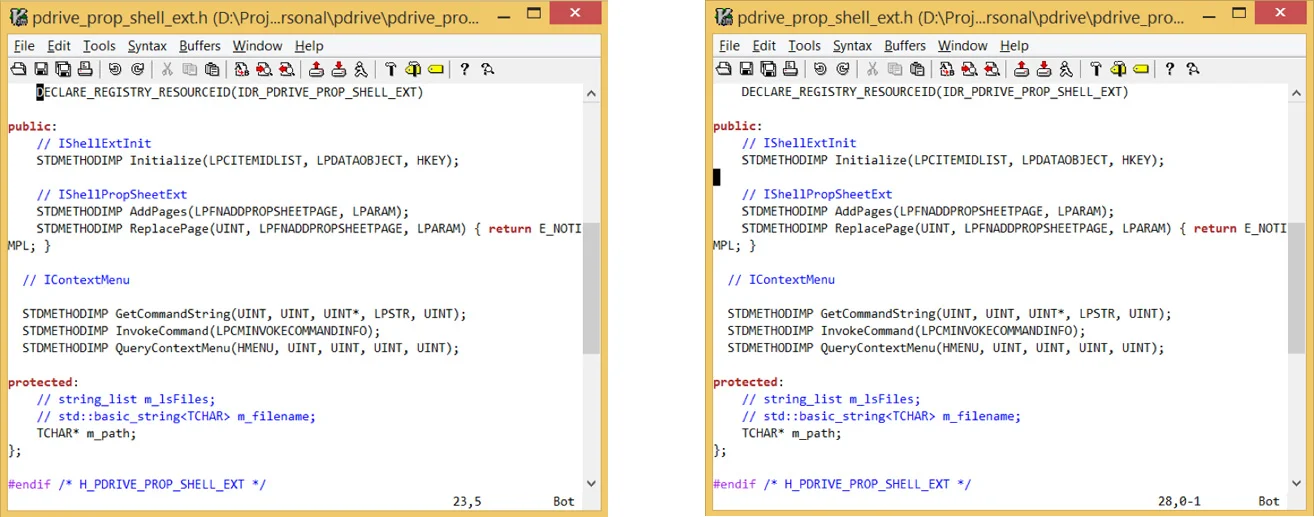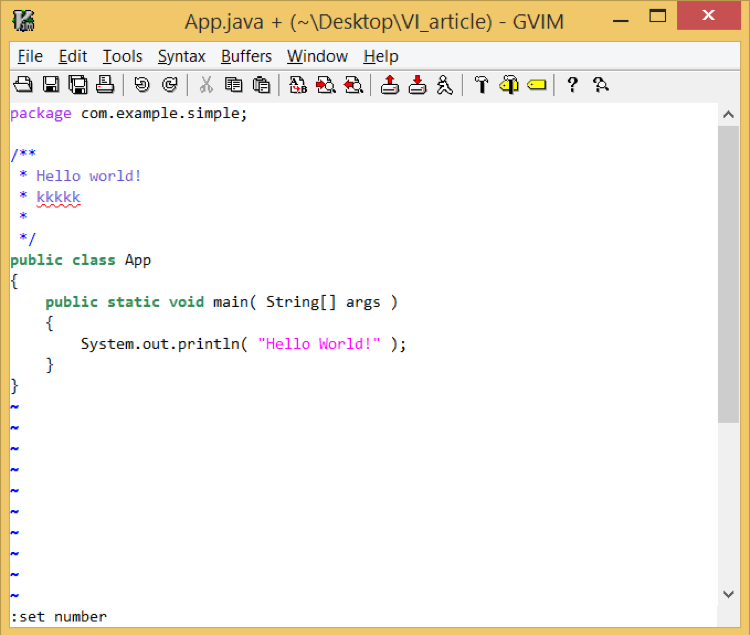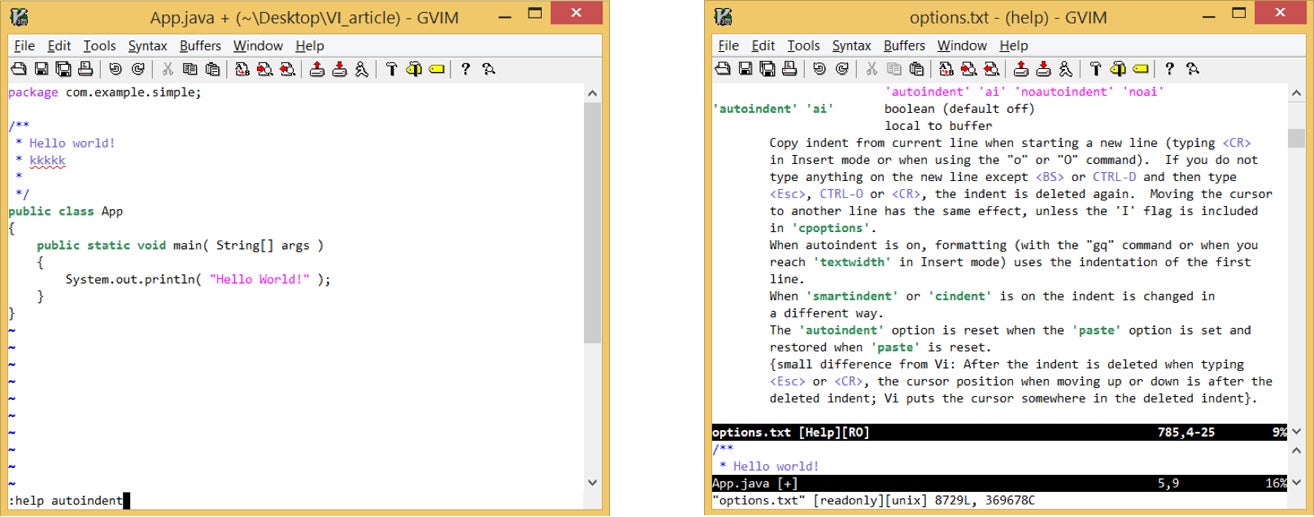https://opensource.com/article/18/9/vi-editor-productivity-powerhouse

These 20+ useful commands will enhance your experience using the vim editor.

Image by :
opensource.com
Editor's
note: The headline and article originally referred to the "vi editor."
It has been updated to the correct name of the editor: "vim."
A versatile and powerful editor, vim includes a rich set of potent commands that make it a popular choice for many users. This article specifically looks at commands that are not enabled by default in vim but are nevertheless useful. The commands recommended here are expected to be set in a vim configuration file. Though it is possible to enable commands individually from each vim session, the purpose of this article is to create a highly productive environment out of the box.
(Note: The vimrc file is also used for system-wide configurations in Linux, such as
In Linux:
To set the number of spaces to display for a tab:
Test
When both
test
Test
A search for “Test” highlights or finds only the second line:
test
Test
The first image is with scrolloff=0 and the second image is with scrolloff=5.
Tip:
To display a permanent status bar at the bottom of the vim screen showing the filename, row number, column number, etc.:
Long format for the
For help on a command:
These useful commands are sure to enhance your vim experience. Which other commands do you recommend?
A versatile and powerful editor, vim includes a rich set of potent commands that make it a popular choice for many users. This article specifically looks at commands that are not enabled by default in vim but are nevertheless useful. The commands recommended here are expected to be set in a vim configuration file. Though it is possible to enable commands individually from each vim session, the purpose of this article is to create a highly productive environment out of the box.
Before you begin
The commands or configurations discussed here go into the vim startup configuration file, vimrc, located in the user home directory. Follow the instructions below to set the commands in vimrc:(Note: The vimrc file is also used for system-wide configurations in Linux, such as
/etc/vimrc or /etc/vim/vimrc. In this article, we'll consider only user-specific vimrc, present in user home folder.)In Linux:
- Open the file with
vi $HOME/.vimrc - Type or copy/paste the commands in the cheat sheet at the end of this article
- Save and close (
:wq)
- First, install gvim
- Open gvim
- Click Edit --> Startup settings, which opens the _vimrc file
- Type or copy/paste the commands in the cheat sheet at the end of this article
- Click File --> Save
- Indentation & Tabs
- Display & Format
- Search
- Browse & Scroll
- Spell
- Miscellaneous
1. Indentation & Tabs
To automatically align the indentation of a line in a file:set autoindentset smartindentaxs cindent, cinoptions, indentexpr, etc., which are not explained here. syn is a helpful command that shows or sets the file syntax.To set the number of spaces to display for a tab:
set tabstop=4set shiftwidth=4autocmd).set expandtab2. Display & Format
To show line numbers:set numberset textwidth=80set wrapmargin=2set showmatch3. Search
To highlight the searched term in a file:set hlsearchset incsearchset ignorecaseignorecase when both ignorecase and smartcase are set and the search pattern contains uppercase:set smartcaseTest
When both
ignorecase and smartcase are set, a search for “test” finds and highlights both:test
Test
A search for “Test” highlights or finds only the second line:
test
Test
4. Browse & Scroll
For a better visual experience, you may prefer to have the cursor somewhere in the middle rather than on the first line. The following option sets the cursor position to the 5th row.set scrolloff=5The first image is with scrolloff=0 and the second image is with scrolloff=5.
Tip:
set sidescrolloff is useful if you also set nowrap.To display a permanent status bar at the bottom of the vim screen showing the filename, row number, column number, etc.:
set laststatus=25. Spell
vim has a built-in spell-checker that is quite useful for text editing as well as coding. vim recognizes the file type and checks the spelling of comments only in code. Use the following command to turn on spell-check for the English language:set spell spelllang=en_us6. Miscellaneous
Disable creating backup file: When this option is on, vim creates a backup of the previous edit. If you do not want this feature, disable it as shown below. Backup files are named with a tilde (~) at the end of the filename.set nobackup. and end with .swp.set noswapfileset autochdir.un~ extension.set undofileset errorbellsset visualbellBonus
vim provides long-format as well as short-format commands. Either format can be used to set or unset the configuration.Long format for the
autoindent command:set autoindentautoindent command:set ai? at the end:set autoindent?no as a prefix:set noautoindent:, followed by the set command. This configuration is effective only for the current file editing session.For help on a command:
:help autoindentThese useful commands are sure to enhance your vim experience. Which other commands do you recommend?
Cheat sheet
Copy/paste this list of commands in your vimrc file:" Indentation & Tabs set autoindent set smartindent set tabstop=4 set shiftwidth=4 set expandtab set smarttab " Display & format set number set textwidth=80 set wrapmargin=2 set showmatch " Search set hlsearch set incsearch set ignorecase set smartcase " Browse & Scroll set scrolloff=5 set laststatus=2 " Spell set spell spelllang=en_us " Miscellaneous set nobackup set noswapfile set autochdir set undofile set visualbell set errorbells









No comments:
Post a Comment